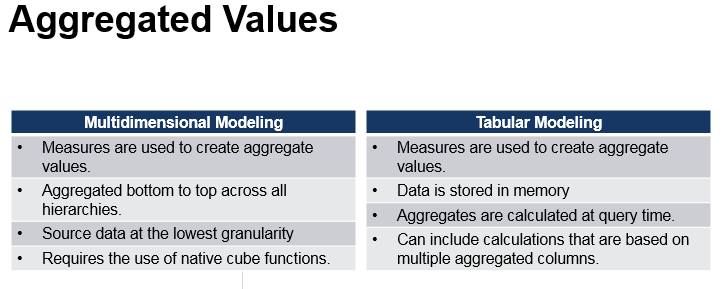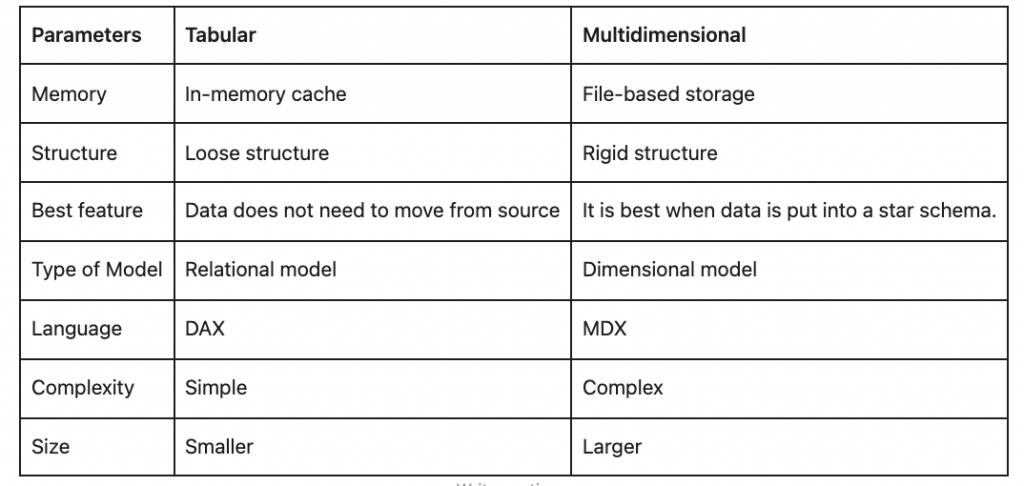

Aggregations: optimize DirectQuery models in Power BI by controlling and optimizing the aggregations.Composite models: extend existing Power BI or Azure Analyses Services models by importing new tables and creating new relationships, without making rookie mistakes that could result in poor performance or inaccurate results.DirectQuery: connect a data source without importing data understand the limitations and the differences with imported tables.Security: control row-level and object-level security to make sure sensitive data is not exposed to unauthorized users.Take control of the standard properties like sorting, display folders, hierarchies, format string, summarize by. Refine the semantic model: improve the Tabular model by leveraging all the capabilities like KPI, detail rows, featured tables, date table, grouping columns, and data category.Understand the engine: learn the differences between the formula engine and the storage engine, how VertiPaq works, and how a DAX request is evaluated.Choose the right model type: Import, DirectQuery over SQL, DirectQuery over AS (also known as composite models).Productivity: use any tool depending on your requirements – Power BI Desktop, Visual Studio, and Tabular Editor.Here are the many things we teach that you did not know you needed: This means reviewing specific modules in depth when you work on specific areas of the model, such as security, partitioning, aggregations, deployment, scaling out, and more. After an initial review of all the modules, you can use the content as a reference while creating your model. This course is useful to different professionals working with Power BI and Analysis Services. We created Mastering Tabular to help you in this learning process!

Especially if you are new to these concepts, you need guidance and best practices. But do you know what you can (and cannot) do, and how? Tabular Editor and Visual Studio are just development tools that expose hundreds of properties corresponding to the features you need.
#Ssas tabular vs multidimensional performance full
If you publish a model on a Power BI Premium workspace, you also have full access to enterprise features like partitions and object-level security. Even though the user interface of Power BI Desktop does not expose all the features, you can use external tools like Tabular Editor to use for example calculation groups and KPIs, just to name two features that are also useful in simple and small datasets. Power BI’s model is the same as Analysis Services’.

However, why should a Power BI author consider taking this course? Let’s explain. We know that Analysis Services developers understand the importance of such training. Because we like short names, we called it Mastering Tabular. Therefore, we created a new course that extended SSAS Tabular and covers all the Tabular model features of Power BI, Azure Analysis Services, and SQL Server Analysis Services. Moreover, new enterprise modeling features have been added specifically for Power BI. Our suite of video courses comprised a specific training for Analysis Services – the SSAS Tabular video course – but the evolution of Power BI made such content relevant also for many solutions based on Power BI. SSAS is a popular tool since it provides a wide range of benefits to users.Why did we create a single comprehensive training covering Tabular in all the products where it is used? It connects your business database with various applications to gain access to data and obtain in-depth insight. The components offer multiple benefits for businesses to aggregate and condense data that is siloed. SSAS services can be a huge asset to organisations when implemented and optimised properly. It includes functionalities that help accelerate BI processes and deliver the same for many other apps like SQL Server Reporting Services and Office 365. The Tabular Cube is designed to create business intelligence practices that are customised to various businesses. As a self-service BI tool, the Tabular Model expands on concepts that are easy to use and understand, as compared to multidimensional models. Microsoft has released the Tabular Model as an innovative, new enhancement to Analysis Services. This results in better data-driven decision-making and improved outcomes for businesses. The SSAS service empowers users to design, create, and manage multidimensional mining models or structures by aggregating data from various sources and relational databases and leveraging data mining algorithms. SQL Server Analysis Services (SSAS) is a powerful data mining and online analytical processing tool designed specifically for BI applications.


 0 kommentar(er)
0 kommentar(er)
